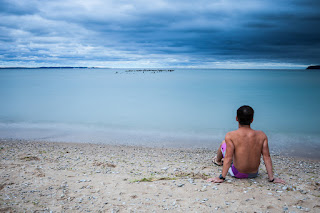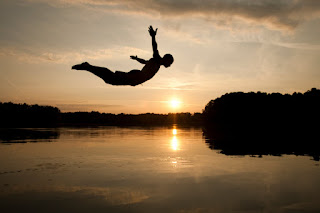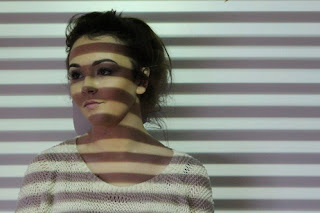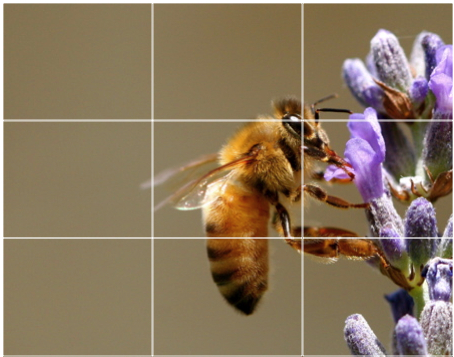Rule of Thirds
You can use the rule of thirds as a guide in the off-center placement of your subjects. Here's how it works.
Before you snap the picture, imagine your picture area divided into thirds both horizontally and vertically. The intersections of these imaginary lines suggest four options for placing the center of interest for good composition. The option you select depends upon the subject and how you would like that subject to be presented.
In this shot the subject was placed along a whole line which means she is considerably off center and therefore creating an additional point of interest. Placing her right in the center of the frame could have resulted in an ‘awkward’ shot.
HORIZON LINES
In a similar way a good technique for landscape shots is to position horizons or building (objects) along one of the horizontal lines.

Dividing a composition in half by placing the horizon across the middle of the frame can create a powerful composition with the right subject and appropriate light. See below.

Horizons placed very low in the frame heighten the isolation of subjects at the horizon.


Isolating one person at the bottom (or top) edge of the frame can create an atmosphere of emptiness by contrasting it with the vastness of the sky, or to suggest ascension or flight.

You can also apply the rule of thirds guidelines to the placement of the horizon in your photos. Here the center position of the boat and horizon results in a static feeling. We've moved the horizon line to the lower third. In general, place the horizon high or low in your scenes, but rarely in the middle. Centered shots may suggest order or symmetrical balance. Taking a shot head on is also awkward. Avoid this kind of shot when making documentaries. The position of the subject shot off-center, suggests conflict.



For more examples and advice, check out this link!
When you snap a picture, remember to consider the rule of thirds!
You can use the rule of thirds as a guide in the off-center placement of your subjects. Here's how it works.
Before you snap the picture, imagine your picture area divided into thirds both horizontally and vertically. The intersections of these imaginary lines suggest four options for placing the center of interest for good composition. The option you select depends upon the subject and how you would like that subject to be presented.
\
In this image the head of the subject was placed on one of the intersecting points – especially his eyes which are a natural point of focus for a portrait. His tie and flower also take up a secondary point of interest.
In this shot the subject was placed along a whole line which means she is considerably off center and therefore creating an additional point of interest. Placing her right in the center of the frame could have resulted in an ‘awkward’ shot.
HORIZON LINES
In a similar way a good technique for landscape shots is to position horizons or building (objects) along one of the horizontal lines.

Dividing a composition in half by placing the horizon across the middle of the frame can create a powerful composition with the right subject and appropriate light. See below.

Horizons placed very low in the frame heighten the isolation of subjects at the horizon.


Isolating one person at the bottom (or top) edge of the frame can create an atmosphere of emptiness by contrasting it with the vastness of the sky, or to suggest ascension or flight.

You can also apply the rule of thirds guidelines to the placement of the horizon in your photos. Here the center position of the boat and horizon results in a static feeling. We've moved the horizon line to the lower third. In general, place the horizon high or low in your scenes, but rarely in the middle. Centered shots may suggest order or symmetrical balance. Taking a shot head on is also awkward. Avoid this kind of shot when making documentaries. The position of the subject shot off-center, suggests conflict.



For more examples and advice, check out this link!
When you snap a picture, remember to consider the rule of thirds!



























